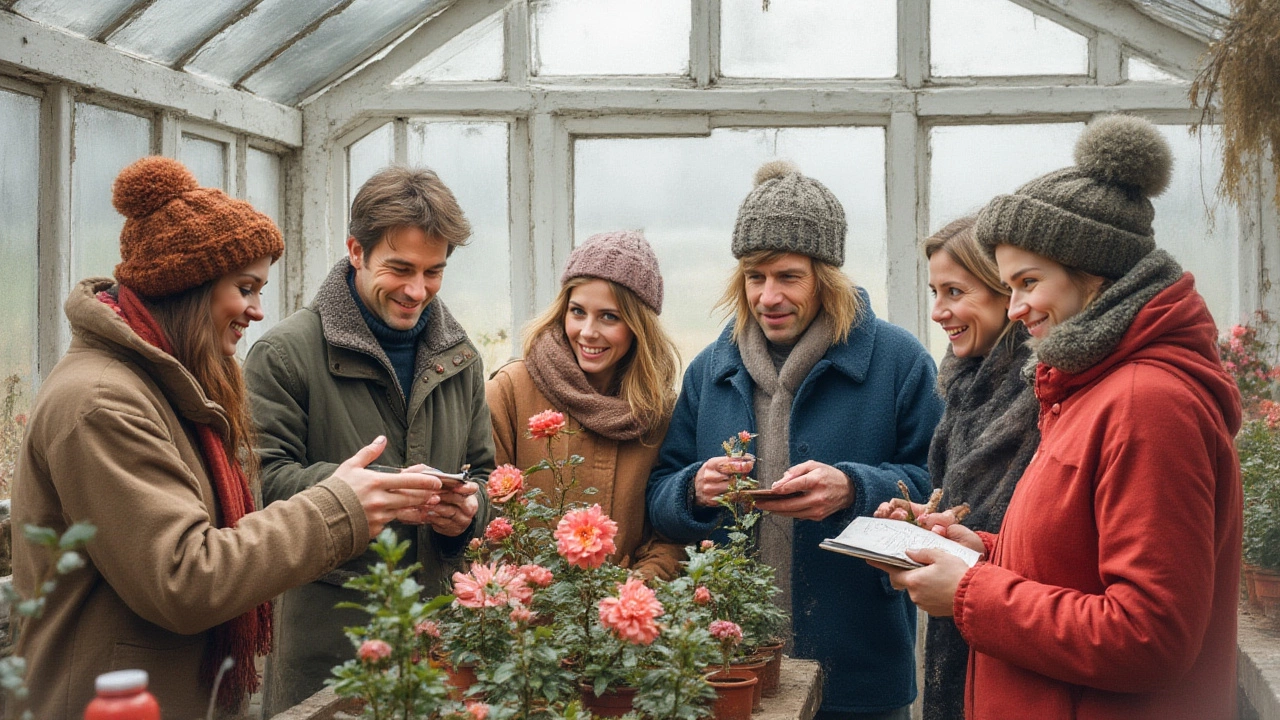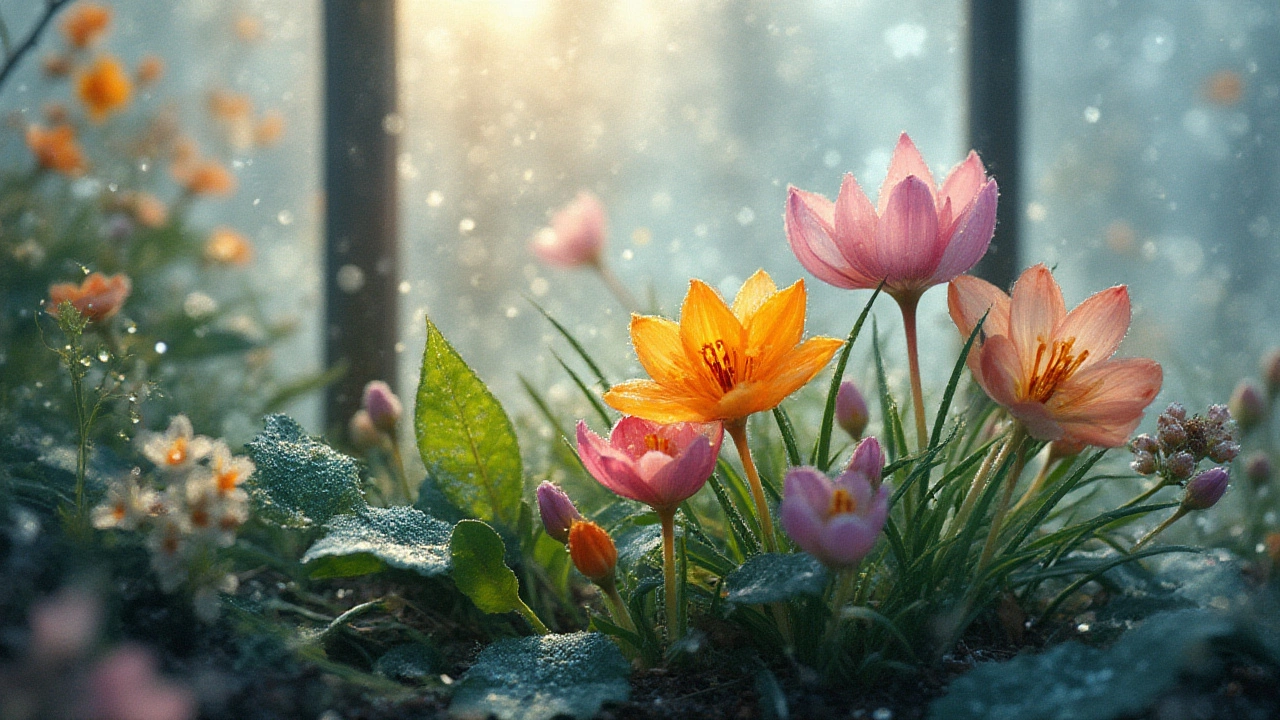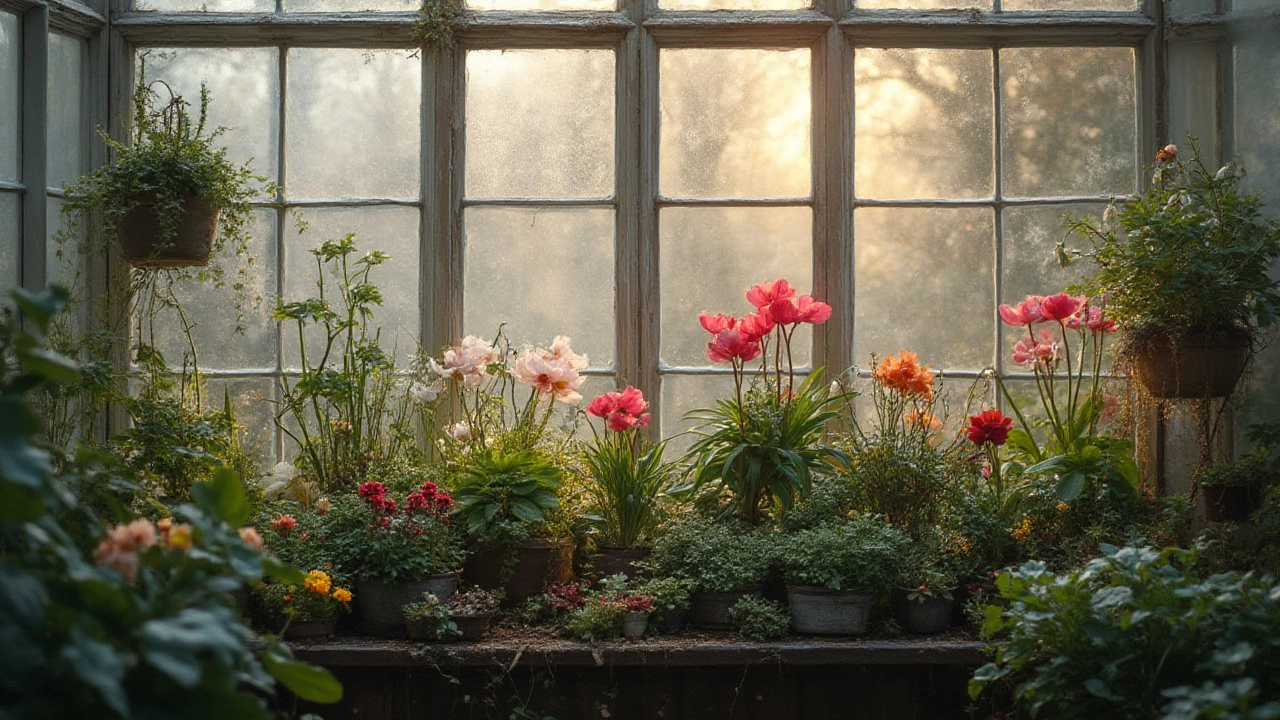Picture this: It’s late January, every car on the street is glazed with frost, and the parks are just dirty patches of grass and puddles. Yet, when I slide open the old greenhouse in my garden, I catch a surprising whiff of fresh green—and, sometimes, even a pop of purple or pink bloom. People say winter’s for hibernating, but these stubborn flowers? They’re just getting started.
Cold-Hardy Flowers That Flourish Without Heat
If you think the word ‘greenhouse’ means you need to crank up electricity bills and blast heaters, let me save your wallet. In the UK, lots of flowers shrug off the chilly air as long as frost can't nip them directly. Unheated greenhouses keep the harshest wind and frost at bay and offer the mild protection these tough cookies crave.
The standout stars? Lets start with winter flowers that bring colour when you need it most. Cyclamen coum is basically the poster child. I can vouch for them—my daughter Esme calls them the "gumdrop flowers" for their vivid pink and magenta petals. They bloom best in January through March, as long as you don’t drown them. Give them dappled light, keep soil just moist, and they’ll drop their leaves when too hot but actually thrive in a greenhouse's chilly winter light.
Primula vulgaris—what British folks just call primroses—are oddly defiant. I once forgot a tray under my old wooden bench and pulled it out in December, half expecting mush. Instead, the cheerful yellow blooms looked like they’d been painted by a kid with a love for highlighters. Primroses want cool-to-cold weather and reward patient gardeners with clusters of soft flowers until spring.
If subtle drama’s your style, go for Helleborus niger, or Christmas rose. These aren’t actual roses but perennials with pale petals (sometimes white, sometimes tinted green or blush). Their roots like things on the dry side in winter, so make sure pots have good drainage, or else you’ll get root rot rather than winter glory. While the outside world is gray, hellebores in the greenhouse feel like secret guests at a winter ball.
For splashes of purple-blue, Iris unguicularis is hard to beat. They look delicate but somehow bloom from December onwards, even through cold snaps. Snip a few for a vase and you’ll get a faint grape scent that always takes me back to my gran’s old garden in Kent. If you want longer flowering, deadhead the old blooms and clear away yellowing leaves each month.
Of course, pansies deserve a spot. They’re not technically wild-about-freezing, but in a greenhouse away from direct frost, they’ll stretch flower production through much of winter. Last Christmas, Marlon tried to grow pansies from seed for his school fair—his secret was a cold frame inside the greenhouse for extra insulation. Worked like a charm: he had flowers to sell in February when everyone else was still defrosting inside.
Don’t forget snowdrops. Galanthus nivalis can bloom in pots or borders tucked inside a glasshouse. Give them nice damp compost and somewhere cool but not icy. They’re the definition of perseverance and do their best impersonation of tiny, drooping lanterns when nothing else dares.

Getting the Conditions Right for Winter Blooms
Growing flowers in an unheated greenhouse during a classic British winter is like raising kids—if you just leave it to luck, you end up with trouble. The magic is in stacking small advantages. First, remember cold is fine; it’s frost that’s the enemy. Most greenhouses, even rickety ones with a cracked pane or two, will keep direct frost off plants and give you a microclimate that’s usually a few degrees warmer at night.
Ventilation actually matters, even in winter. If you keep things airtight, you’ll get damp, and with it, ugly mold or botrytis (grey rot). I prop my door open for an hour or two on milder days. It feels odd, but reduces fungal problems massively.
Water smart, not hard. When the days are short, roots are sluggish and fungus is hungry for any excuse. Only water when the compost feels dry an inch below the surface. Cold wet roots will sulk or, worse, rot away. I’ve learned this the hard way—Esme once made a ‘watering rota’ and things got soggy pretty fast! Light misting can help keep humidity right without swamping your trays.
Light is your limiting factor. Even in a glasshouse, we’re not talking tropical levels of energy—just a little more than outdoors. Scrub the panes in late autumn to let as much sunlight in as possible. I usually get Marlon and Esme to help; bribery with hot chocolate works wonders for this kind of job.
Compost matters. Flowers don’t pull off their winter performance on last year’s leftovers. Go for fresh, peat-free multipurpose compost every planting. For perennials, top dress with homemade leaf mold or well-rotted bark. This boost helps plants set buds in time for those short winter days when they need it most. Never let fertilizer build up; if you’ve fed in summer, skip winter feeding unless plants really look hungry—too much nitrogen makes soft foliage that freezes or rots easily.
Be ruthless with deadheads and debris. Faded blooms are invitations for disease and mold. Once a week, sweep through with snips to clear dying foliage or spent flowers. This makes more room for light and healthy airflow and encourages more flowers, even when the days are short and the air is cold enough to see your breath.

Tips, Tricks, and Fail-Safes from Real Life
I’d love to pretend my greenhouse is a perfect winter flower showroom, but reality is always muddier. Here’s what’s worked—and failed—for me, plus some game-changing tips from other gardeners I trust.
If you want more warmth on brutal nights, bubble wrap is cheaper than a heater. Line the inside of your glass or polycarbonate greenhouse with sheets (secured with clips or tape). This keeps night temperatures a good degree or two higher. Just don’t go overboard—you still want airflow to dodge rot.
Cloches and cold frames can act like little mini-greenhouses inside the greenhouse itself. I pop a plastic cloche over trays of particularly precious seedlings or the pansies when the news says it’ll dip below -5°C. It sounds fussy but isn’t—takes five minutes, saves a week’s growth. If you’re short on cash, large clear plastic bottles with the bottom cut off work surprisingly well.
Most failures have come from over-optimism about tender annuals. Forget bedding geraniums, petunias, or anything that screams “summer basket.” Without heat, they just collapse when temperatures touch freezing, even if they look fine at first. Save those for heated greenhouses or as plug plants in spring. Stick to truly hardy varieties for best winter displays.
If you’re itching to get ahead for spring, sow early sweet peas. You won’t see blooms until late-spring, but sowing in autumn and overwintering inside the greenhouse gives you super-strong young plants that handle transplanting easily, with flowers earlier than anyone else. You can try the same with antirrhinum (snapdragons). They don’t bloom in winter but will sit quietly, putting down roots until warmth returns, then surge ahead of outdoor-sown ones.
Scent is possible! Besides Cyclamen, some primulas and hyacinths can be started in autumn and will give you perfume by late February. It’s a morale boost when the January days drag. Forced bulbs like narcissus ‘Paperwhite’ do best with some extra warmth, but will often flower in a cold glasshouse, though a late cold snap may delay things.
On the darkest days, I set up a string of waterproof LED fairy lights among the seed trays. Not because it helps the flowers (sadly, not enough light for that to matter), but because coming into the greenhouse at dusk, surrounded by twinkling lights and early primrose blooms, is the best break from winter I know. My kids agree: when Esme drags in a friend from school to show off her “winter jungle,” I know we’re doing something right. Give it a go—your own bit of magic, right when you need it most.
